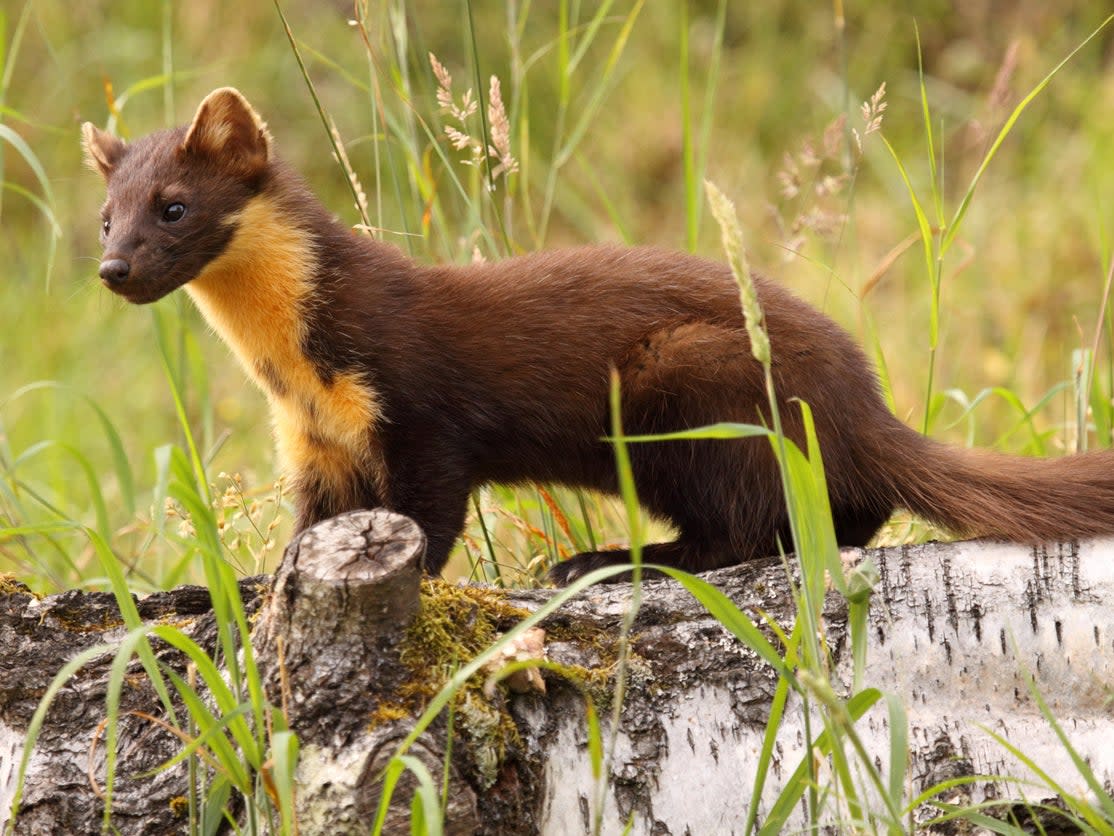Pine martens reintroduced at ‘secret location’ in Forest of Dean, century after being wiped out in England

A few hundred years ago, the beautiful pine marten was found all over the British Isles.
But over the 18th and 19th centuries gamekeepers at shooting estates largely wiped them out as they sought to protect their stocks of game birds.
And by the early 20th century, they were almost completely extinct across England and Wales, with small pockets of them pushed to the remotest Scottish highlands.
Since then, pine martens have made a significant comeback in Scotland, but had not made it to England, until now.
In August this year 18 pine martens were humanely trapped in woodland near Inverness, and then taken on a long journey, down to a part of Gloucestershire close to the Welsh border, where they have been released in a secret location within the Forest of Dean.
The successful reintroduction is the result of years of planning to establish a source population to bring pine martens back to England.
The work was carried out by Gloucestershire Wildlife Trust, together with Forestry England, Vincent Wildlife Trust and Forest Research.
The organisations hope the mammals, which come from the same family as stoats and weasels, will help to control the enormous population of non-native grey squirrels which damage the trees in the ancient woodland.
They also hope the new pine martens will spread and come into contact and breed with a population reintroduced in South Wales in 2015.
Read more
‘Hundreds of thousands’ of animals killed to protect grouse shooting
Similar in size to a domestic cat, with slim bodies, brown fur and a distinctive cream “bib” on their throats, pine martens have long, bushy tails and prominent rounded ears.
Their diet includes small mammals, carrion, birds, insects, and fruits.
“We are delighted to be involved with the return of the pine marten, a charming, but highly elusive mammal that was once widespread throughout England,” said Rebecca Wilson, Forestry England’s Planning and Environment Manager in West England.
“As native omnivores, pine martens play a vital role in the delicate balance of woodland ecosystems. Living at low densities in the landscape, they forage on fruit, fungi and a range of prey including the grey squirrel, a non-native species which is having a detrimental impact on broadleaf woodland throughout England.”
“We are looking forward to working with volunteers, local communities and partner organisations to monitor how the pine martens are moving throughout the Forest of Dean and the wider landscape.”
The pine martens’ activity will be closely monitored by Dr Catherine McNicol, Gloucestershire Wildlife Trust’s conservation project manager.
She said: “Pine martens are elusive and shy animals, with their presence often only indicated by scats in the middle of forestry tracks.
“They only give birth to a few kits each year if breeding is even successful, so the rate of marten population recovery in the UK is low.”
But she added it “is hoped that their protection, alongside these reintroductions, will give them the boost they need to become resilient and thrive”.
Dr Gareth Parry, director of conservation at Gloucestershire Wildlife Trust, said: “We are in a biodiversity emergency and conserving our remaining wildlife is not enough, we must also take action to support nature’s recovery.
“We’re working with partners to establish a Nature Recovery Network across the county and bringing back native species, such as pine marten, which play a vital role in ecosystem functioning, is an important part of this work.”

 Yahoo News
Yahoo News 

